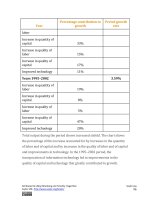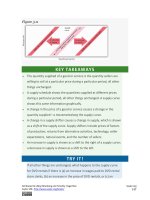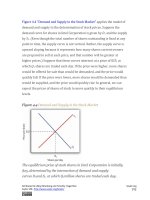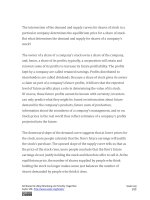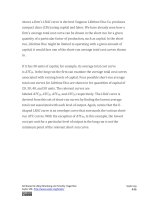Authors libby rittenberg 712
Bạn đang xem bản rút gọn của tài liệu. Xem và tải ngay bản đầy đủ của tài liệu tại đây (524.95 KB, 1 trang )
been defined. The public sector’s role in the allocation of common property
resources is investigated in the chapter on the environment.
We can distinguish two categories of natural resources, those that are
renewable and those that are not. A renewable natural resource is one
whose services can be used in one period without necessarily reducing the
stock of the resource that will be available in subsequent periods. The fact
that they can be used in such a manner does not mean that they will be;
renewable natural resources can be depleted. Wilderness areas, land, and
water are renewable natural resources. The consumption of the services of
an exhaustible natural resource, on the other hand, necessarily reduces the
stock of the resource. Oil and coal are exhaustible natural resources.
Exhaustible Natural Resources
Owners of exhaustible natural resources can be expected to take the
interests of future as well as current consumers into account in their
extraction decisions. The greater the expected future demand for an
exhaustible natural resource, the greater will be the quantity preserved for
future use.
Expectations and Resource Extraction
Suppose you are the exclusive owner of a deposit of oil in Wyoming. You
know that any oil you pump from this deposit and sell cannot be replaced.
You are aware that this is true of all the world’s oil; the consumption of oil
inevitably reduces the stock of this resource.
Attributed to Libby Rittenberg and Timothy Tregarthen
Saylor URL: />
Saylor.org
712
